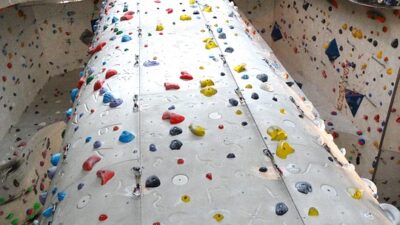As the world becomes more health-conscious and technology-driven, the marathon running scene is witnessing a remarkable transformation. Gone are the days when participants merely laced up their shoes and hit the pavement. Today, a wave of innovations is reshaping the marathon experience, enhancing training, participation, and even race-day performance. From cutting-edge technology to sustainable practices, here’s a look at the future of marathons and the innovations that are leading the charge.
1. Wearable Technology
One of the most significant advancements in the marathon world is the integration of wearable technology. Smartwatches, heart rate monitors, and fitness trackers have become essential tools for runners. These devices provide real-time data on distance, heart rate, pace, and calories burned, allowing athletes to optimize their training plans.
As technology evolves, we can expect even more sophisticated wearables. Future devices may include advanced biometric sensors that track hydration levels, fatigue, and muscle strain, giving runners deeper insights into their physical condition. Additionally, augmented reality (AR) could enhance the training experience by providing virtual coaching or simulated race conditions, making preparation more interactive and efficient.
2. Virtual Racing
The COVID-19 pandemic accelerated the rise of virtual racing, a trend that is likely to continue. Virtual marathons allow participants to run their desired distances from any location, using tracking apps to log their times and share them with race organizers. This innovation significantly broadens the accessibility of marathons, enabling runners from all over the world to participate without the need for travel.
As virtual racing matures, we could see the introduction of more interactive and engaging formats. For example, immersive experiences using virtual reality could transport runners to famous marathon routes, or social platforms might create community-driven events where participants can compete in real-time against friends and fellow runners.
3. Sustainability Initiatives
As climate change becomes a pressing global issue, the running community is increasingly committed to sustainability. Many marathon organizers are adopting eco-friendly practices, such as reducing waste, using biodegradable materials, and implementing carbon offset programs.
Future marathons may also incorporate technology to further these efforts. Innovations like digital water stations, where runners can refill their bottles instead of receiving single-use cups, or apps that allow participants to pledge green actions during their race, show promise. Such initiatives not only reduce the environmental impact but also resonate with runners who prioritize sustainability.
4. Advanced Footwear and Gear
The footwear industry has always played a vital role in running performance, and ongoing innovations are pushing the boundaries further. Next-gen running shoes are being engineered with advanced materials like carbon fiber plates, responsive foams, and energy-return technologies that enhance performance and reduce injury risk.
Looking ahead, we can expect customizable shoes produced through 3D printing technology, enabling athletes to find the perfect fit for their unique biomechanics. Furthermore, clothing will evolve with smart textiles that respond to body temperature and sweat levels, providing optimal comfort and support throughout the race.
5. Enhanced Fan Engagement
Marathons are not only about the runners; they’re also a celebration for supporters and fans. Innovations in live-streaming technology and interactive platforms are transforming how spectators engage with events. Enhanced broadcasting can provide multi-angle views, athlete tracking, and real-time updates, allowing fans to feel more connected to the race.
In the future, we might see the implementation of drone technology to capture aerial footage and immersive live experiences. Spectator participation could also be gamified, with apps offering rewards for cheering and supporting runners during the race, fostering a sense of community and excitement.
6. Smart Race Management
Streamlined race management is essential for preserving the seamless experience of marathon events. Technology can aid in everything from registration to post-race analysis. Biometric data collection on participants at registration points will speed up the check-in process, while race-day apps can provide real-time updates on start times, course changes, and emergency alerts.
Furthermore, AI algorithms could analyze data from thousands of runners to predict trends and enhance future event planning, optimizing everything from medical support availability to crowd control.
Conclusion
The future of marathons is bright, driven by innovations that enhance the experience for runners, spectators, and organizers alike. As technology continues to advance, we can expect racing to become more inclusive, engaging, and efficient, while also promoting sustainability and community connection. For those passionate about running, the coming years promise an exciting evolution in the marathon experience, blending tradition with cutting-edge innovation. Whether you’re a seasoned marathoner or a casual participant, the future is certainly exhilarating. Lace up and get ready!



